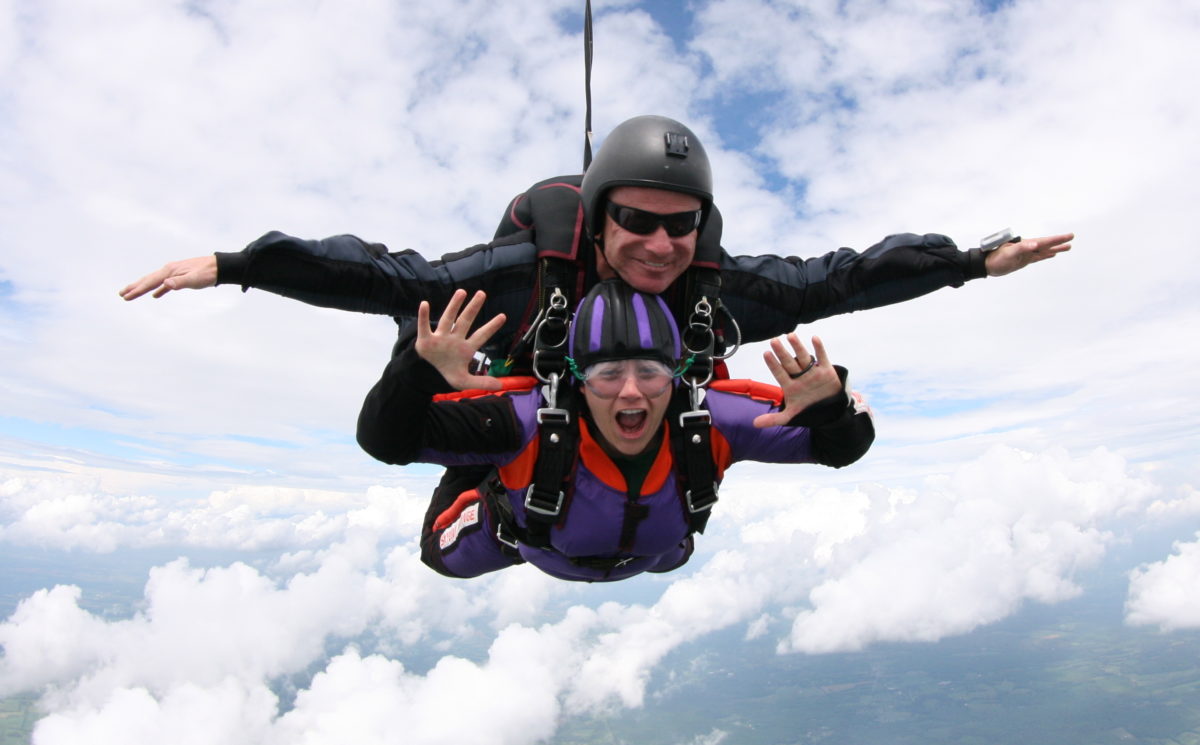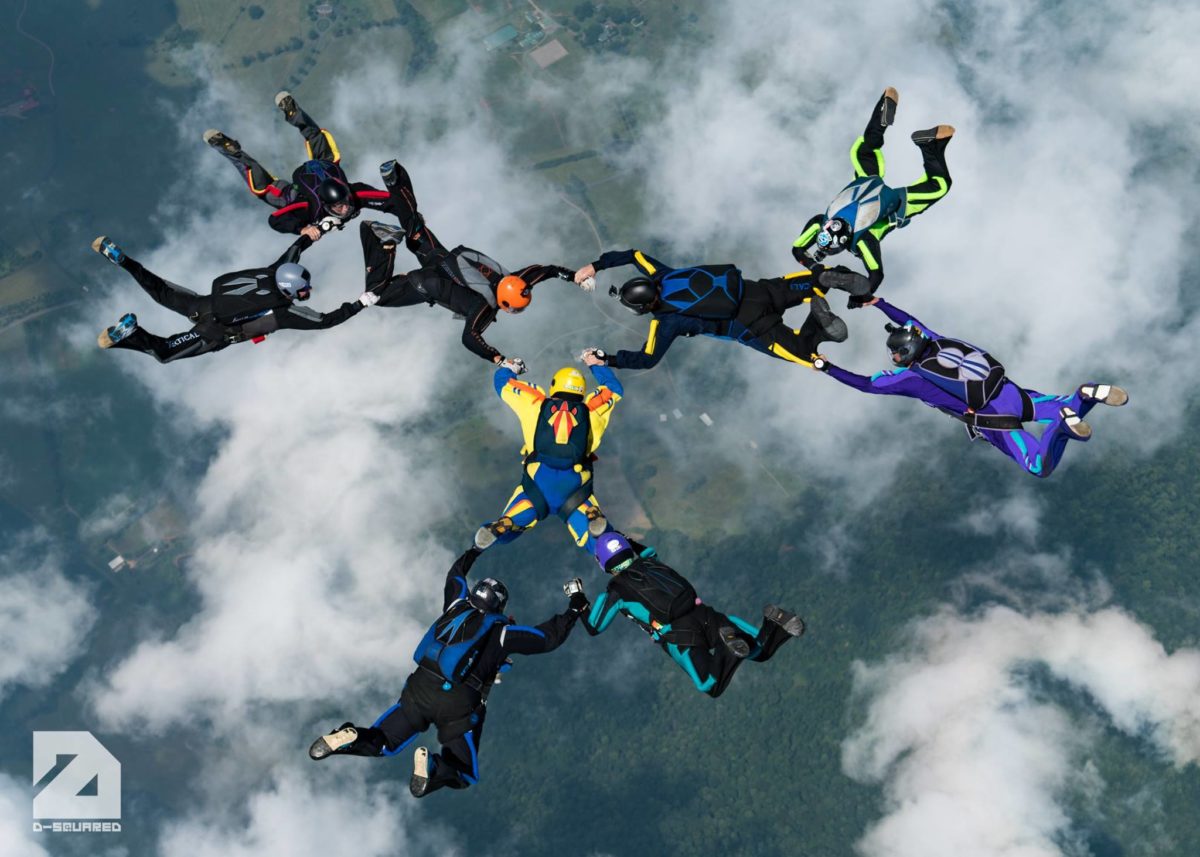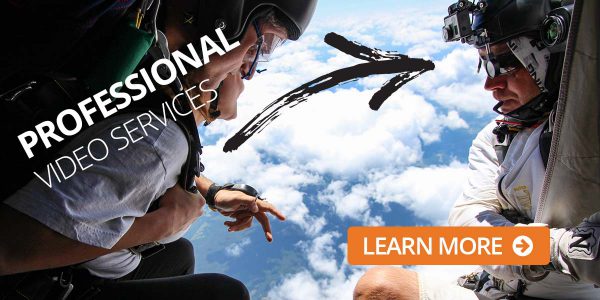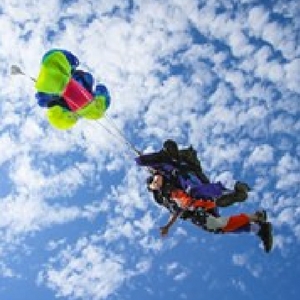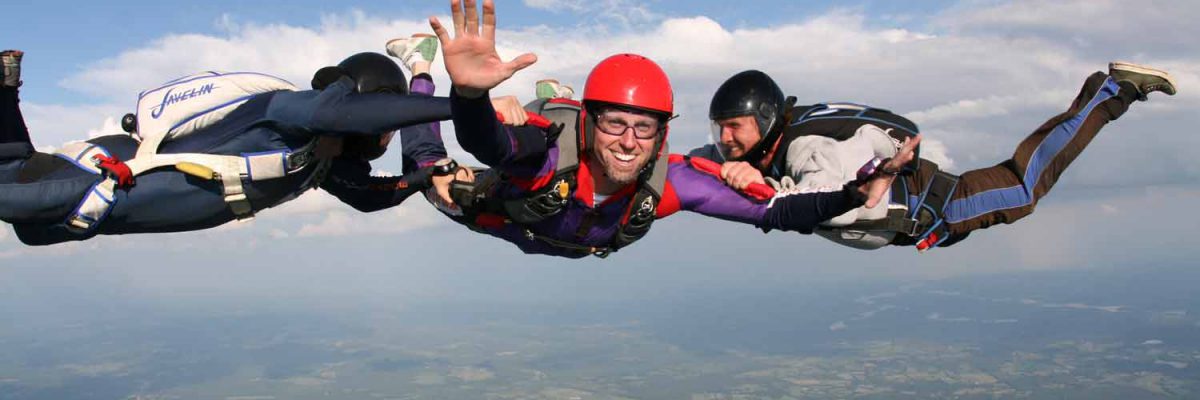
What Are the Different Types of Skydiving?
Wednesday, November 22, 2023
- Skydive Orange
- 11/22/23
- 0
- Skydiving Information
Skydiving is SO much more than falling through the sky, pulling your parachute, and landing. After you go tandem skydiving (and inevitably fall in love), you’ll discover there are many different types of skydiving! The possibilities of what can be achieved in the sport are virtually endless, let’s start at the beginning!
What Is The Safest Form Of Skydiving?
Although regulatory safety standards are in place for both tandem and solo skydivers, tandem skydiving is statistically the safest form of skydiving. Why? You’re secured to a highly experienced and professional skydiving instructor! Tandem instructors undergo rigorous training and are required to meet strict skydiving standards set by the Federal Aviation Administration (FAA).
What Are The Types Of Skydivers?
There are three types of skydivers: tandem skydivers, students, and fun jumpers.
Tandems. Tandem skydiving allows the novice to rock the sky with a superstar! This is when a complete newcomer goes through a brief training session, straps on to a tandem instructor, and does a full send from a perfectly good airplane!
Students. Student skydivers are those who have completed a tandem jump and wish to become solo, licensed skydivers. The student progression duration varies based on different learning curves but is no less than 25 skydives.
Fun jumpers. This nifty term refers to licensed skydivers who jump just ‘cuz! Fun jumpers make up the skydiving community and are passionate about advancing in the sport while guiding others along the way.
Freefall Orientations
There are four primary body orientations a skydiver can take on in freefall: belly, back, freefly, and angle.
Belly. This is when a skydiver falls belly-to-earth in the arched “banana” position. Belly flying is the most common type of skydiving and is the first position student skydivers learn to master!
Back. Back flying is similar to belly, just opposite. Many fun jumpers overlook the necessity of learning how to backfly, but skydiving safety tips include how essential it is to safely bail out or do a planned exit from a non-belly skydive. A skydiver will fall slower on their belly than they will on their back, and their backfly will be slower than their freefly So, if a skydiver accidentally or purposefully stops their freefly, they should transition to their back and then their belly. This ensures a predictable decrease in velocity. Whereas, switching from freeflying to belly flying will be a drastic change in velocity and may catch other jumpers off guard or even cause a collision – OUCH! So, yeah, it’s critical to know how to backfly before moving on to more advanced orientations.
Freefly (FF): Freeflying is anything but belly flying! The term typically refers to flying head-up or head-down – vertical to the ground.
Angle flying: “Hey man, let’s go rip some angles!” Is a phrase you may hear some skygods around the dropzone say to one another. Angle flying is one of the fastest skydiving disciplines. People who have yet to master it will sarcastically refer to angles as a “glorified belly jump” (no hate to the anglers)! This discipline entails literally angling the body on a precise axis between horizontal and vertical to induce forward speed.
What Are The Disciplines Of Skydiving?
What are the three major styles of skydiving? There are too many to choose from, each unique and special in its way! Let’s break it down.
Formation skydiving (FS). Formation skydiving on your belly is called relative work (RW), as it involves skydivers flying relative to one another nearby! During a skydive focused on relative work, skydivers will fall belly-to-earth and “take grips” or “turn points” which means to intentionally grab onto one another in a planned way. This is also referred to as docking.
Vertical formation skydiving (VFS). This discipline involves flying your body in a head-up or head-down position relative to at least one other person. Check out Project 19, the women’s vertical world record!
Movement. Jumps that involve intentionally moving horizontally, such as angle flying or tracking, are becoming increasingly popular. It’s common for a dropzone to host movement camps where various skill levels come together to learn by jumping together with coaches!
Canopy piloting. Skydivers are constantly transcending barriers and absolutely crushing limits in the realm of canopy piloting. There are many skydiving disciplines focused on canopy dynamics, let’s look into it.
- Swooping: This is a high-performance discipline that entails skydivers maneuvering their canopy to zip across the ground at super-high speeds. There are national and global swoop competitions that focus on competitors honing their skills. Swooping carries an increased risk because skydivers intentionally go super fast near the ground – and the ground is hard. If someone chooses to start their swooping journey, it’s a necessity to have a reputable canopy coach as your instructor.
- Flocking: When skydivers (typically on smaller, high-performance canopies) immediately deploy upon exiting the aircraft, they’re able to fly alongside one another. Imagine birds flocking through the sky … now make it skydivers!
- Canopy relative work (CRW): This is when skydivers under canopy build formations like skydivers do in freefall! Canopy pilots can stack, dock, and link with other canopies. CRW has an increased chance of canopy entanglement, which is why communication leading up to these formations and while flying is crucial.
Wingsuiting. If you want your freefall time to nearly double, get a wingsuit! Wingsuiting allows skydivers to go crazy far horizontal distances (and they are notorious for landing off the dropzone). Wingsuiters can flock just like canopy pilots. In fact, 19 awesome women just set the FAI Women’s Wingsuit World Record!
Are you ready to see which skydiving discipline will light a fire in your soul!? Book your tandem today! We are so excited to have you.
The largest tandem skydiving center near Northern Virginia, Washington D.C. and Maryland.
Copyright © 2024, Skydive Orange, All Rights Reserved.
DropZone Web Design & Marketing by Beyond Marketing, LLC
